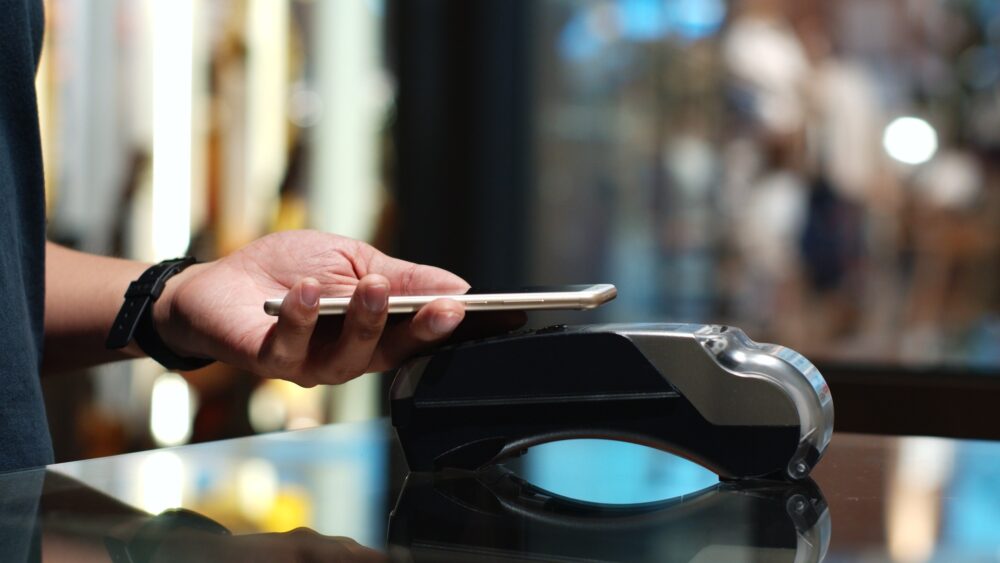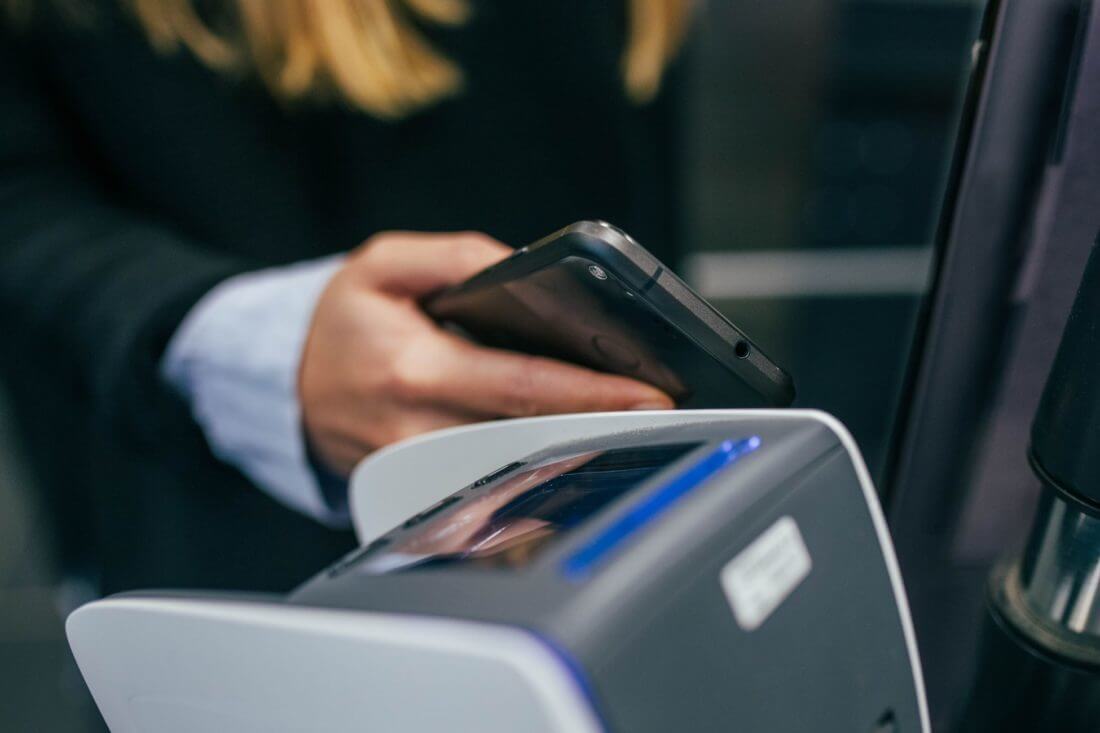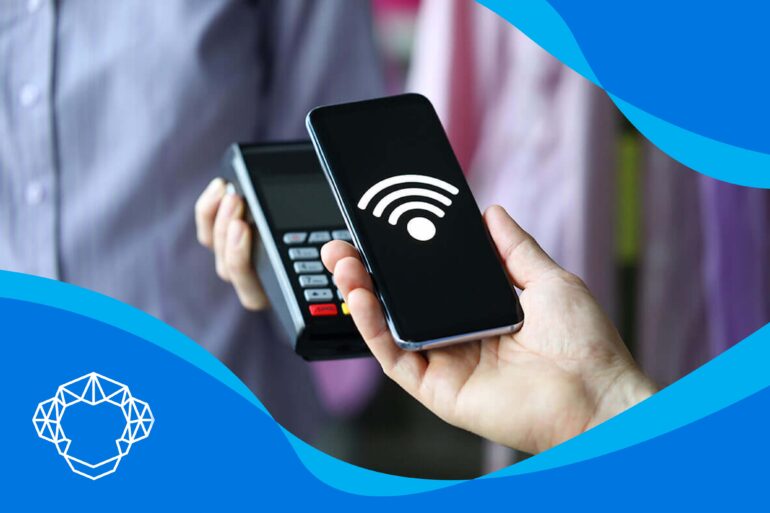The customer should always be at the heart of the business. For merchants, offering a variety of convenient payment options is a big part of this equation. This includes mobile credit card processing, which can further streamline transactions, showing just how important meeting clients’ needs is to the business. Here’s everything you need to know about this savvy payment method.
First Things First – What Exactly Is Mobile Credit Card Processing?
Mobile credit card processing is a convenient way to accept credit card payments with portable devices, including smartphones and tablets. Equipped with specialized software and a card reader, devices like iPhones and Android smartphones can turn into convenient tools for payment processing on the go.
Whether selling products or charging services, speed and convenience are becoming more and more sought-after in today’s technology-driven world. By 2025, mobile payments will make up almost 80% of all digital transactions. Moreover, numerous credit card statistics only further highlight the fact that not implementing this convenient method is one of the biggest mistakes business owners can make today.

From the First Credit Card to Mobile Credit Card Processing Apps, Payment Methods Have Come a Long Way
All the way back in 1914, Western Union issued the first non-cash payment cards. Back then, these were metal plates, but over the long stream of Visa, Mastercard, American Express, and other credit cards, payment methods have only advanced, with convenience being the overarching goal.
Technological advances in the ’70s and ’80s, including electronic authorization and point of sale (POS) systems, further transformed the landscape. However, nothing has ushered as big of a change as those tiny computers we all have in our pockets today. Smartphones have completely changed the game of accepting in-person purchases.
Released in 2009, the Square software is the first of its kind. Created by Block, Inc., the first credit card processing company that developed an original reader, it became the norm for small businesses in the 2010s. As the years went by, even bigger businesses started to implement this convenient payment method – and how could they not, with as much as 86% of consumers using cards for everyday spending? The demand is there, and as a business owner, you simply have to meet it.

How Does Mobile App Credit Card Processing Work?
When it comes to merchant services, credit card processing (CCP) enables the business to accept cashless payments. Once the payment is made, the issuing bank checks if there are sufficient funds, and if that’s the case, the payment gateway transfers this confirmation to the merchant. With this, the transaction is complete, and the whole ordeal should take just a few seconds.
The same kind of process takes place with mobile processing, only portable devices are used. Specially designed software can use mobile wallets like Apple Pay and Google Wallet, as well as magstripe, tap-to-pay, and chip cards like Visa, Mastercard, and American Express. This means your business isn’t limited to only traditional shopping in brick-and-mortar locations – you can expand it beyond these confines, and that’s obviously a positive addition.
What Are the Benefits of Implementing This Payment Method?
First and foremost, the main benefit of mobile credit card processing lies in its flexibility and portability. You can accept payments on the go, and there’s no need for a fixed POS terminal. Moreover, compared to POS fees, these solutions are less costly upfront, which means they are a great idea for a small business.
Of course, there’s the obvious but super crucial benefit of convenience. It’s estimated that over 500 million people have Apple Pay activated on their iPhones, and that’s just one payment method.
There’s no going around it – in today’s fast-paced, technology-driven market, meeting this baseline demand for convenience increases both customer satisfaction and loyalty. All in all, it can help your business exude the professionalism necessary to stay on top of the competition.

What Types of Businesses Can Significantly Benefit From Getting Credit Card Processing Services?
For the reasons discussed above, more and more businesses are starting to work with different credit card processing companies and use apps such as PayPal. While this is arguably the most famous platform, there are plenty of PayPal alternatives, including the aforementioned Square, Payoneer, and so on.
But before you even start thinking about payment processors and those impending credit card transaction fees, let’s take a look at the different types of businesses that should seriously consider implementing this payment method:
- Street vendors, food trucks, and mobile caterers – Being able to process credit card transactions on the go is obviously important, as you can efficiently serve customers no matter where the business is at any given time,
- Event vendors, pop-up shops, and temporary retail spaces – These businesses thrive on spontaneity and flexibility, so the payment methods you offer should reflect just that,
- Professionals who work on-site at customers’ homes or businesses – From plumbers to personal fitness trainers and everything in between, service professionals can eliminate the hassle that comes with waiting for checks or invoicing,
- Small businesses and freelancers – Across various industries, streamlining transactions is super important for small businesses and freelancers to make everything more convenient for their clients,
Travel services, transportation providers, and tour guides – these businesses are almost always on the go, so it’s important to have a solution to accept payments in an equally flexible way.

What Are the Different Mobile Credit Card Processing Solutions You Should Consider?
Did you know that there are over a billion credit cards in the US alone? According to Fortune, the average American has around 4 of them. Combine that with the fact that there are over 310 million smartphone users in the country, and it’s no wonder why there’s a growing number of processing solutions that combine these two important aspects of our daily lives.
Here are the most common ways your clients can use their smartphones to purchase products or services.
| Type of Mobile Processing | How It Works |
|---|---|
| Apple Pay or Google Wallet | Apps that upload relevant card information to a virtual wallet, compatible with near-field communication (NFC) devices and special terminals for contactless payments |
| Card Readers | Typically plugged into a mobile device, these readers allow card payments at various locations, which is crucial for businesses that are always on the go |
| Browser Purchases | Used for businesses with the eCommerce aspect, allowing clients to seamlessly shop online using their mobile device, including in-app purchases |
| Mobile-Optimized Shopping Carts | Payment gateways that are optimized for mobile devices, featuring a user-friendly, responsive, and simple design to further enhance customer experience |
| Invoicing Tools | Tools for streamlined invoicing and billing through mobile devices, often allowing you to check payment status and even track sales data |
What Are the Most Important Features This Processing Software Should Have?
Throughout this whole ordeal, understanding what your business needs is the most difficult part. To get a clearer picture, it’s important to understand the most important features of a mobile payment processor. That way, you can implement the features that can truly make a difference in the way you conduct business and how it can continue to grow.
In-Person Payments Are Beneficial Not Only for Retail
While the retail industry and restaurant businesses especially benefit from in-person mobile payments, there are plenty of other realms that should consider this feature. For example, an electrician can offer their services with the added convenience of quickly processing transactions on the spot.
You’ll get paid faster and easier, and at the same time, your clients will be surely pleased. With a job well done and an easy payment method to match, there’s a good reason for them to come back once the services are needed again.
Every App Should Have the Ability to Invoice Payments
Another crucial feature of any payment software is invoicing. With it, you can save, send, as well as receive payments, meaning you’ve got clear financial records and, therefore, legal protection. There’s really not much to say about this one – it should be pretty clear why it’s so crucial for a business.
Tracking Data Is a Great Way to Understand Your Business Better
As mobile payments start to stack up, it’s pretty helpful to have a feature that allows you to track data. At the very least, you should be able to track sales volume and payment status, but some systems are much more sophisticated. With this crucial info, you’ll be able to make well-informed decisions that can take the business to the next level.
Inventory Management and Branding Are Great Additional Features
A feature that connects the payment system with your inventory can be a great way to make the tracking process much more efficient. You and the staff would have an easier time finding products, enabling you to complete orders faster.
Also, it’s a good idea to implement branding, if the software allows you to. You can customize the receipts and invoices with a logo, as well as implement it into other stages of the buyer’s journey. This creates a cohesive and professional image that reinforces your brand identity at every customer touchpoint.
A Brief Guide to Setting Up the Mobile Credit Card Processing System
Once you know what you want, setting up the mobile payment processing system is somewhat straightforward. It starts with assessing the business needs and goals, so think about things like the volume of transactions and the level of mobility you work at. Once that’s clear, this cashless and mobile-friendly journey can begin.
It All Starts With Choosing the Right Hardware and Software
First things first, you need to research mobile card readers and other terminals that are compatible with the smartphone or tablet you’re working with. Bluetooth connectivity, operating system compatibility, and security features – these are just some of the factors you need to think about.
Once you’ve got the hardware down, research software or apps that can be integrated into it. Look into the features we’ve discussed above, and make sure you’ve got what you need. There are plenty of options available, so make sure you do research to avoid falling victim to merchant fraud. Unfortunately, it can happen.
Choose a Reliable Payment Processor and Set up a Merchant Account
You won’t be able to offer this convenient payment method to clients if you don’t set up an account with an acquiring bank or a merchant services provider. You’ll need to compare processing fees, contract terms, rates, and let’s not forget – customer support options.
For example, Merchant Chimp offers a wide range of options and features, as well as transparent pricing. That way, you’ve got a clear understanding of what’s happening at all times, and you know exactly where your business is heading.
Of course, the chosen solution will need to comply with industry standards, including the Payment Card Industry Data Security Standard (PCI DSS). On top of that, security measures such as encryption and tokenization need to be implemented to completely safeguard all transactions and client information.
Train Staff and Start the Integration Process
After you’ve set up the merchant account and before the official launch, it’s important to conduct thorough testing. This includes processing transactions, generating receipts, and issuing refunds to make sure everything is in order. Also, your staff needs to get proper training on how to use this new software, so you can include them in this testing stage.
After that, it’s time to integrate it into other systems, such as inventory management and customer relationship management (CRM). Once that’s done, you can finally start offering clients this great new way to pay for the products or services you provide. Of course, the process should evolve as the business grows and customers’ preferences potentially change, so be ready to grow and adapt with them. That way, the business will be on a constant trajectory of improvement, and so many great things can come out of that.

Merchant Chimp Is Here to Make Everything More Convenient for Both You and Your Customers
Each day, the world is getting one step closer to becoming completely cashless. Implementing CCP and online payments is the way to go, but with so many parties and options involved, it’s a tough landscape to navigate.
Merchant Chimp is here to not only clear things up but also help you find the best solutions for your particular business. Together, we can set up a profitable and efficient processing system, promising nothing but success for the enterprise. We offer plenty of other perks, including our discount program, providing fertile ground for small businesses to grow. Contact us today – with Merchant Chimp as a partner, it’s time to bring the whole operation to a whole new level.







